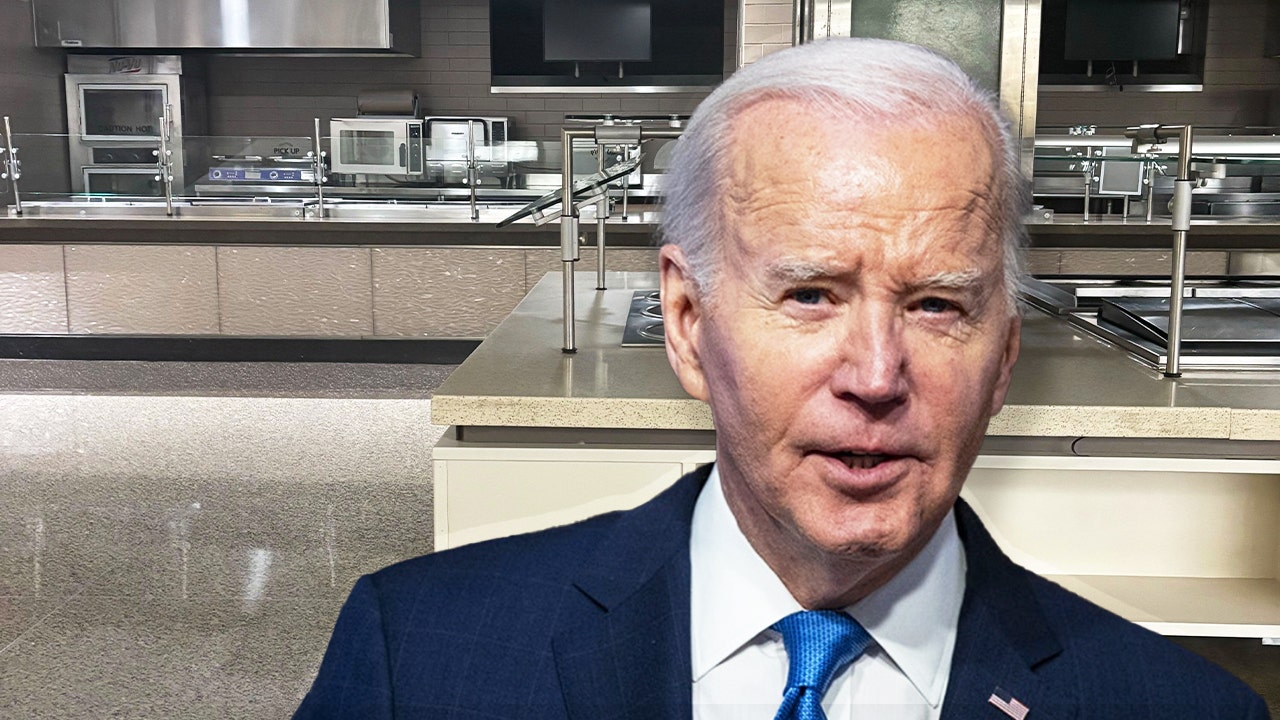Politics
Federal department cafeteria empty for years under Biden: source

Federal Facilities Deserted: The Unsettling Reality of Empty Offices and Cafeterias Under the Biden Administration
The Deserted Cafeteria: A Symbol of Bureaucratic Dysfunction
The cafeteria in a top federal department, once bustling with activity, now resembles a ghost town. According to sources close to the situation, the lunchroom has remained empty and unmanned for years, even after the coronavirus pandemic subsided. This shocking revelation, uncovered by Fox News Digital, highlights a deeper issue within the federal workforce. A source described the situation as "nuts," pointing out the contradictions in federal employees’ behavior. While these employees were quick to show up and protest President Trump’s plans to streamline government operations during a federal holiday, they seem less inclined to return to their jobs despite collecting taxpayer-funded paychecks.
The Department of Interior (DOI) cafeteria, initially closed during the pandemic, remained shuttered under the Biden administration. This decision was made because federal employees were not required to return to in-person work. A photo taken on February 20, 2025, reveals the cafeteria in a state of disuse, with no signs of activity. The source emphasized that this situation reflects the mindset of many federal workers, who appear disconnected from the responsibilities that come with their roles.
The Trump Administration’s Push for In-Person Work: A Clash of Philosophies
The Biden administration’s lax approach to remote work has been a point of contention, particularly under President Trump’s recent leadership. In January, Trump issued a directive requiring federal employees to return to in-person work by early February or face termination. This policy change is part of a broader effort to restore a sense of accountability and productivity within the federal government.
Interior Secretary Doug Burgum has been a vocal supporter of this initiative, stating that the American people elected Trump because they expect a government that works hard and responsibly for them. "Getting the workforce back to the office will help accelerate America’s sprint to Energy Dominance," Burgum said. The secretary’s comments underscore the administration’s belief that in-person work is essential for achieving its goals and delivering results to the public.
The Lingering Legacy of Remote Work Under the Biden Era
The closure of the DOI cafeteria during the pandemic was understandable, given the circumstances. However, the source questioned why the Biden administration allowed federal employees to continue working from home long after the pandemic had ended. "Why did the Biden administration let everyone continue to work from home when there is real work to be done for the country?" the source asked. This sentiment reflects a growing frustration with the perceived lack of urgency and accountability within the federal workforce during Biden’s tenure.
The situation at HUD headquarters in Washington, D.C., further illustrates this point. Officials described the facility as resembling a "taxpayer-funded Spirit Halloween store," highlighting the stark contrast between the bustling activity of past administrations and the eerie quietness under Biden.
The Trump Administration’s Campaign to Downsize and Streamline Government
The Trump administration has made significant strides in recent months to reduce government spending and streamline federal departments. Over the past month, the administration has conducted a sweeping review of federal agencies, slashing budgets and cutting workforce numbers. This effort is part of a broader strategy to downsize the government and make it more efficient.
In January, the U.S. Office of Personnel Management (OPM) offered buyouts to over two million federal civilian employees, encouraging them to leave their positions voluntarily. Approximately 75,000 federal employees accepted Trump’s deferred resignation program, which allows them to retain their pay and benefits while being exempt from in-person work until September 30.
Reactions and Implications Across the Political Spectrum
The Trump administration’s crackdown on remote work and its efforts to downsize the federal workforce have sparked mixed reactions. Supporters argue that these measures are necessary to restore accountability and ensure that federal employees are working effectively for the American people. Critics, however, claim that these policies are overly punitive and could lead to a loss of critical expertise within the government.
The situation at the DOI cafeteria and HUD headquarters serves as a microcosm of the broader debate over the role of government and the expectations placed on federal employees. While the Trump administration pushes for a more centralized and productive workforce, opponents worry about the potential consequences of these changes on both employees and the services they provide.
The Path Forward: Balancing Efficiency and Effectiveness
As the federal government navigates this transition, the key challenge lies in striking a balance between efficiency and effectiveness. The Trump administration’s policies are designed to drive results and ensure that taxpayer dollars are being used responsibly. However, the success of these measures will depend on how they are implemented and whether they can achieve their intended goals without undermining the government’s ability to function effectively.
The empty cafeteria at the DOI and the vacant HUD offices serve as stark reminders of the challenges facing the federal workforce. Whether the Trump administration’s push for in-person work and downsizing will lead to the desired outcomes remains to be seen. One thing is certain, though: the American people are watching closely, expecting a government that truly works for them.


















